Downtown Historic Buildings

George Morgan Thomas House, 151 3rd Street
This home built in 1883 has had many lives, but its ornate rail, turreted corner and peaked roof speak to its Victorian-era origin. A Lewis County native, George Morgan Thomas was born in 1828. He was educated in the "common school" before becoming the local school's commissioner at age 28. Using Kentucky Renaissance on Main project funds, the City restored the fifteen-room home. On July 3, 2006, the newly restored George Morgan Thomas home was dedicated to the citizens of Vanceburg as the new visitor's center.

Train Depot, 218 Main Street
The railroad was known originally as the Maysville and Big Sandy Railroad. The first depot was built on this site shortly after the railroad was completed in 1888 on land belonging to Lyman B. Baird, a son-in-law of Judge William C. Halbert.
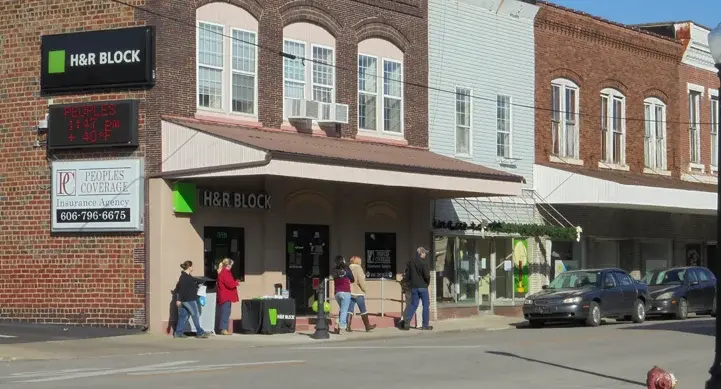
The Stamper Block, Main Street
This row of buildings is often referred to as the Stamper Block because George W. Stamper, a prominent merchant owned most of these buildings at one time. The majority of the buildings were built in the 1870-1880 era. The corner building was once the location of the Petroleum House Hotel, built by the Stricklett brothers in the 1860’s and burned in the late 1870’s. The name Petroleum House came from the fact there was an “oil boom” shortly after the Civil War. Many spectators stayed at this hotel. These buildings have housed a variety of businesses for over 130 years.

The McDaniel House, Second Street
the first occupant of this house was Moses Marcus in 1898. Mr. Marcus owned the New York Racket Store. Later, Mr. Grant McDaniel, a local businessman bought the house and it became known as the McDaniel House.
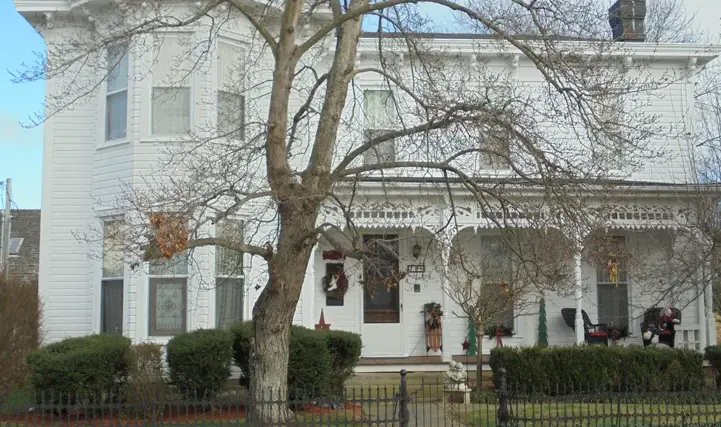
Nelson B. Fisher House
This house was built in the late 1800's. It has the original gingerbread trim and wrough iron fence.

The Carter House, Second & Main St.
The New Carter House, built in 1897 by Thomas Carter, was originally three stories high with a wrought-iron
gallery on the two street sides. It caught fire in the 1920s but was not completely destroyed. The building was purchased by Max Block, who removed the top story, and developed it into a department store with a penthouse on the top level. The hotel was preceded by the Old Carter House on Front Street that burned in 1894.
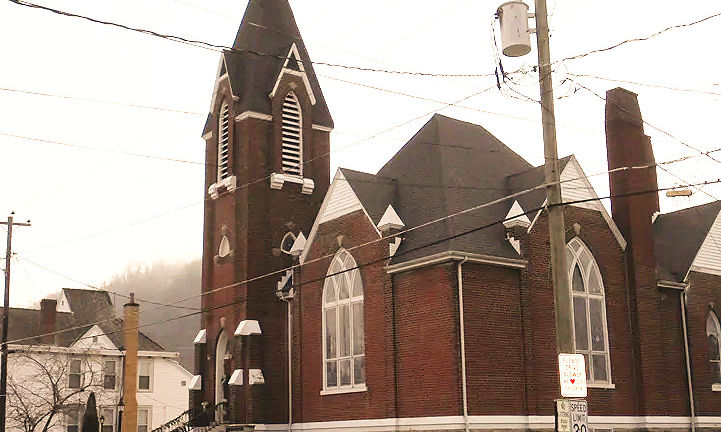
Vanceburg Christian Church, 38 Front Street
in 1896, the Vanceburg Christian Church was built, an example of ecclesiastical architecture of the late 1800's/
The church is still in operation today.

Dr. William H. Campbell House, Front Street
This house was built by Dr. William H. Campbell in 1877. Dr. Campbell served in the Union Army in the Civil War.
The house is currently owned by the Lykins family and is a residence.
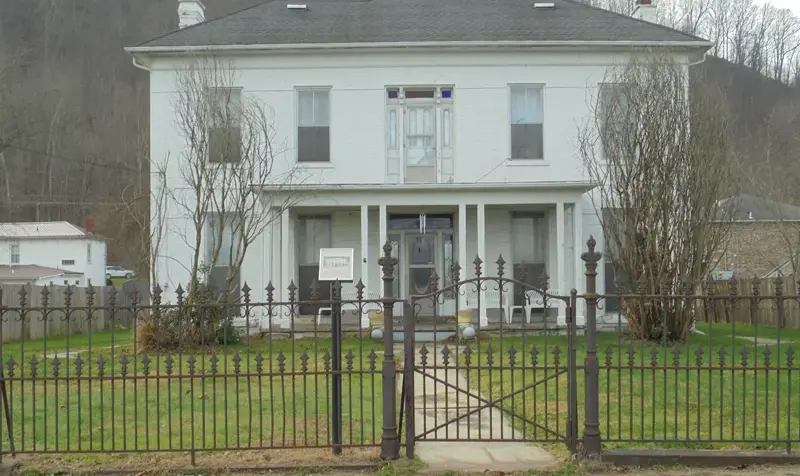
Socrates Ruggles Home, Front Street
This house was built in the 1880's and was occupied by the Ruggles family.

Plummer House 455 Front Street
The Plummer House was built around 1855-1856 by W.A. Plummer,a prominent businessman in Vanceburg.
The +manscard roof was added in the 1880's.+ A mansard or mansard roof is a multi-sided gambrel-style hip roof characterised by two slopes on each of its sides, with the lower slope at a steeper angle than the upper, and often punctured by dormer windows.

Pugh House, Front Street
Built in the Summer of 1887 by Joshua B. Fitch for Samuel J. Pugh, a prominet Vanceburg attorney.
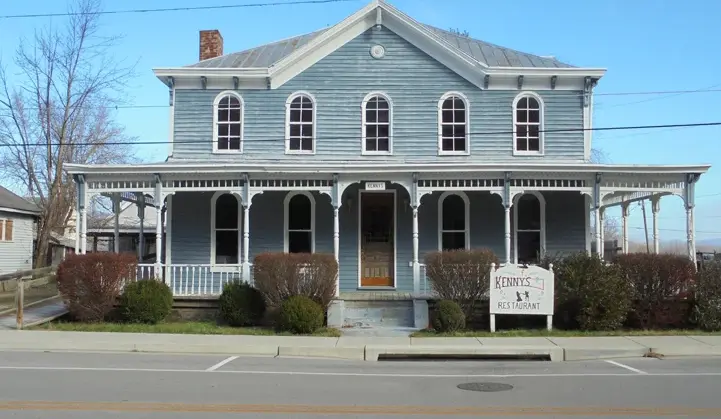
George Washington Stamper House, Second Street
This house was built in the late 1800's by the Stamper Family. Later it was
sold to the Mullikin family, well known educators in Vanceburg.

The Methodist Episcopal Church, Second Street
This church was built in the 1850's and served as a house of worship during the separation
of the Methodist Episcopal Church over the States Rights Issues.

Lewis County Courthouse & Union Monument
Second & Court Streets
The Lewis County Courthouse was built of freestone from a local quarry in 1939. It is a three story building. The 1937 flood damaged the first Vanceburg courthouse.
The Union Monument was dedicated in 1884. It is the only Union Monument south of the Mason Dixon line.
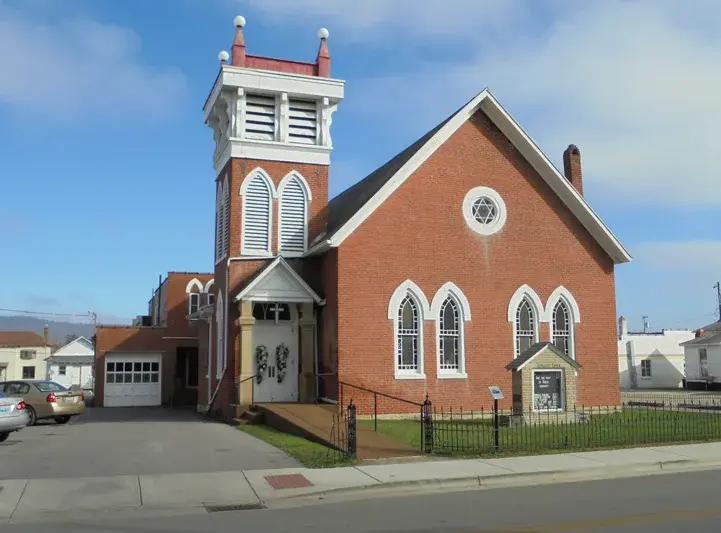
Vanceburg United Methodist Church, Second Street
Prior to 1866 there were few Methodists in Vanceburg, and they had no house of worship. Rev. Jerry Lennen (or Lenner) was sent by the Conference in 1866 to hold services in the school and city hall. Lenner and Rev. Alfred Harrison worked together to help the congregation build a two-story wooden structure on this spot in 1867. In 1884 that church burned down, but by 1886 the congregation had erected this brick structure. Several changes have been made in the structure through the years.
A Star of David glass circular window is on the North wall and repeated on the South wall. This is most usual for a Christian church. The bell was donated by the Buckeye bell Foundry in 1883 and is in use today.
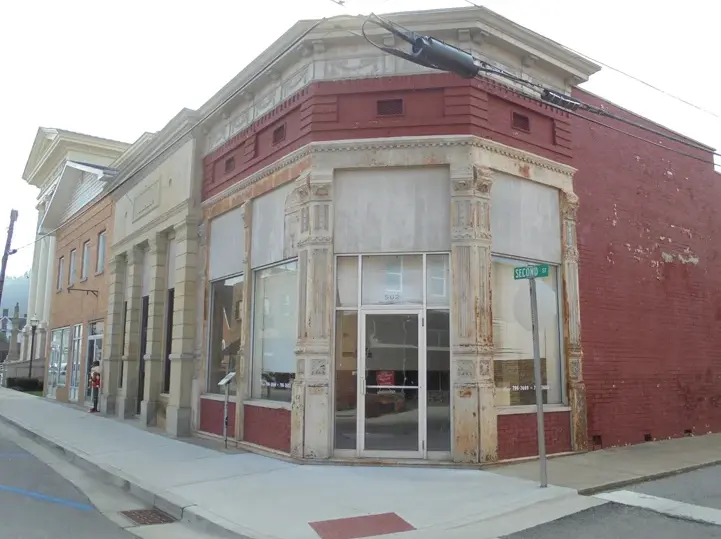
Former Deposit Bank and New York Racket Store
Second Street
These two buildings were the original structures of the Deposit Bank of Vanceburg and the New York Racket Store. The Bank was established about 1889 and this building was erected of freestone in 1900. The Bank merged with the Citizens Bank later to become the Citizens-Deposit Bank.
The building on the corner is unique because it is one of the first types of iron-framed buildings and was built about 1900, and the moldings have a certain interesting style. Moses Marcus came here from Cincinnati before 1905 and opened a stylish men’s clothing store which he called the New York Racket Store.
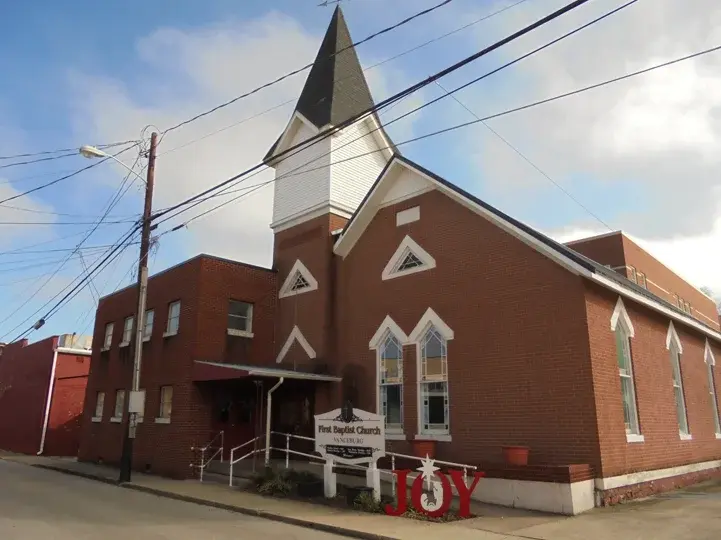
First Baptist Church, 136 Market Street
Built in 1877 by the Presbyterians and used until 1930's. In 1941 it became a
Baptist Church and remains the same today.

Hickle's Pool Room, Second Street
This building, made of native Freestone, was built some time between the 1800s and 1870s. It has been a jewelry store, a drug store, and a billiard hall (Hickle's Pool Room). During the 1913 flood, Max Block operated a clothing store here and offered a flood sale as the flood waters raised
This now serves as a Coffee Shop called Kangaroo Ridge.

The Halbert House, Corner of 3rd & Main Streets
This home, built in 1856, was the home of Judge William C. Halbert and his wife, Lavina. Mr. Halbert was a
well-known attorney and served in several political offices. Throughout the years the house has been owned by several of his descendants.

Riverside Seminary, 474 Front Street
This house was built in the Summer of 1877 by Joshua B. Fitch. It served for many years as adormitory for the Riverside Seminary which stood on the opposite side of the street.
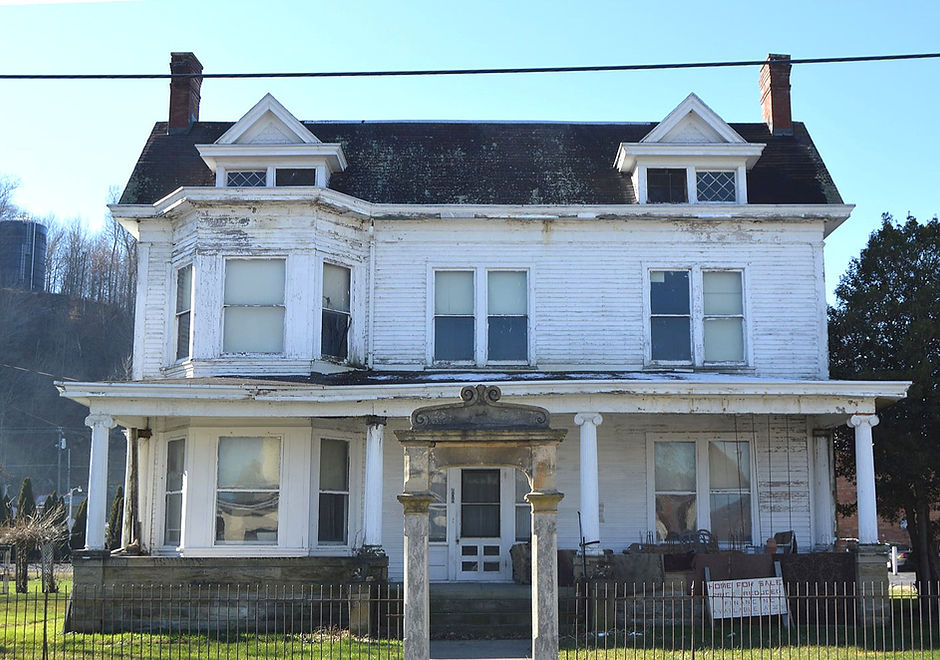
The Hammond House, Second Street
The C.W. Hammond family initiated construction of the house in 1908. The Hammonds had two older sons,and constructed this house for their daughter, Virginia. The third floor was being planned as a music room/playhouse for Virginia but was never finished, as work on the residence halted when Virginia died at age 10. TheHammonds never occupied the residence that was so close to being completed. The house was eventually soldto Mr. & Mrs. Russell Queen, who had watched the house being built from their residence next door. Theymoved into the house with their young son, George and were the home's only residents, other than the boarderswho rented rooms when Mrs. Queen opened the residence as a boarding house.